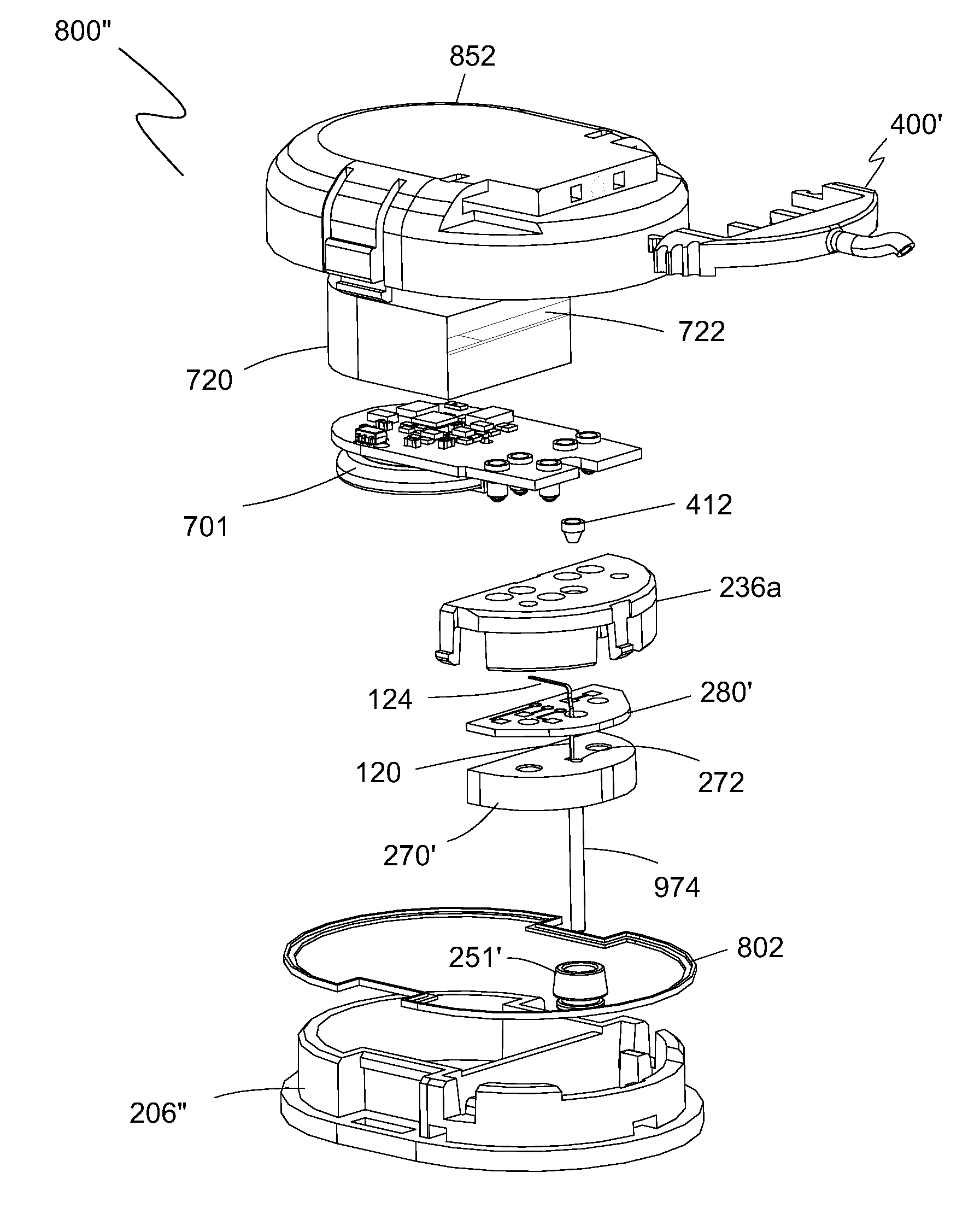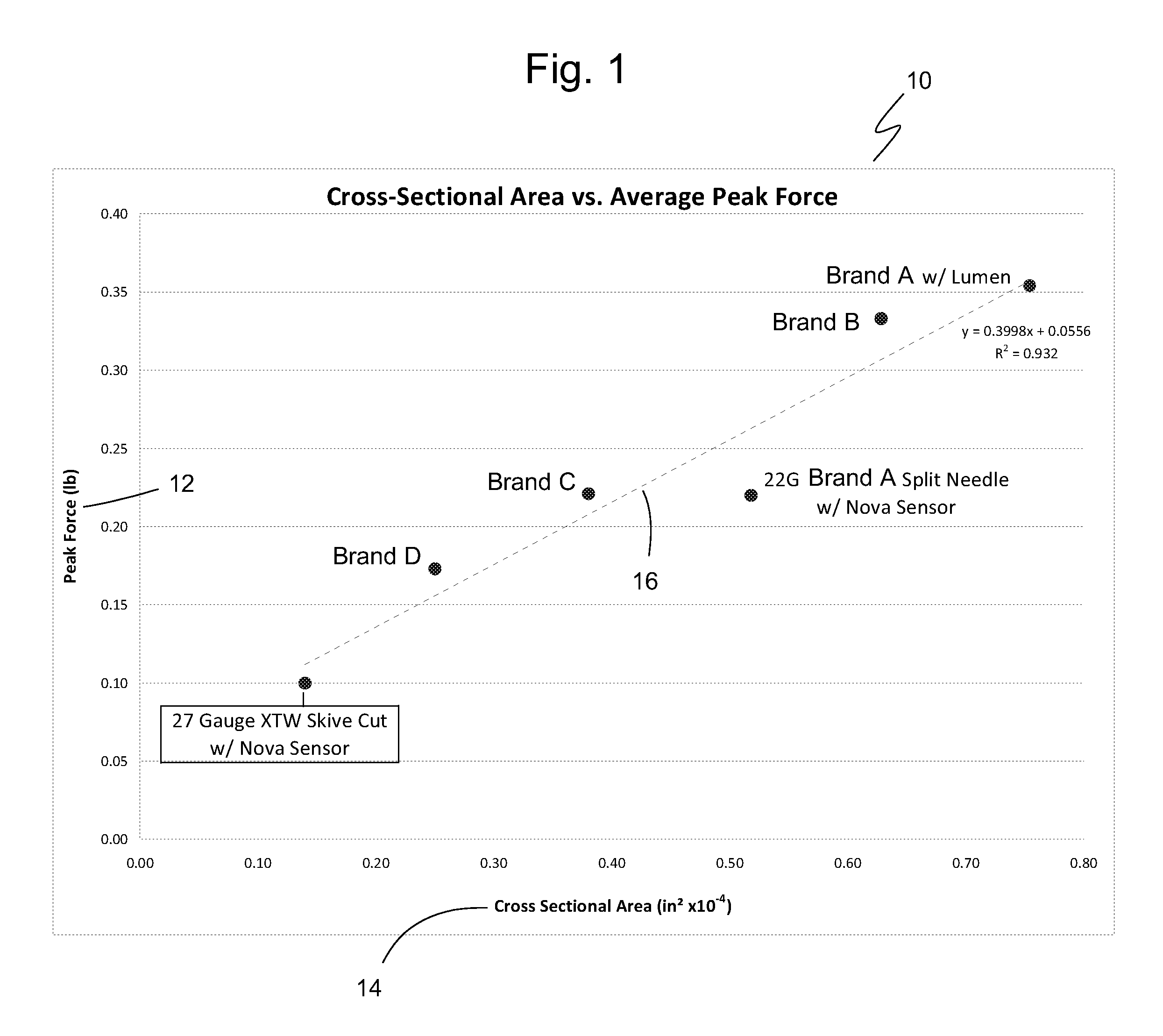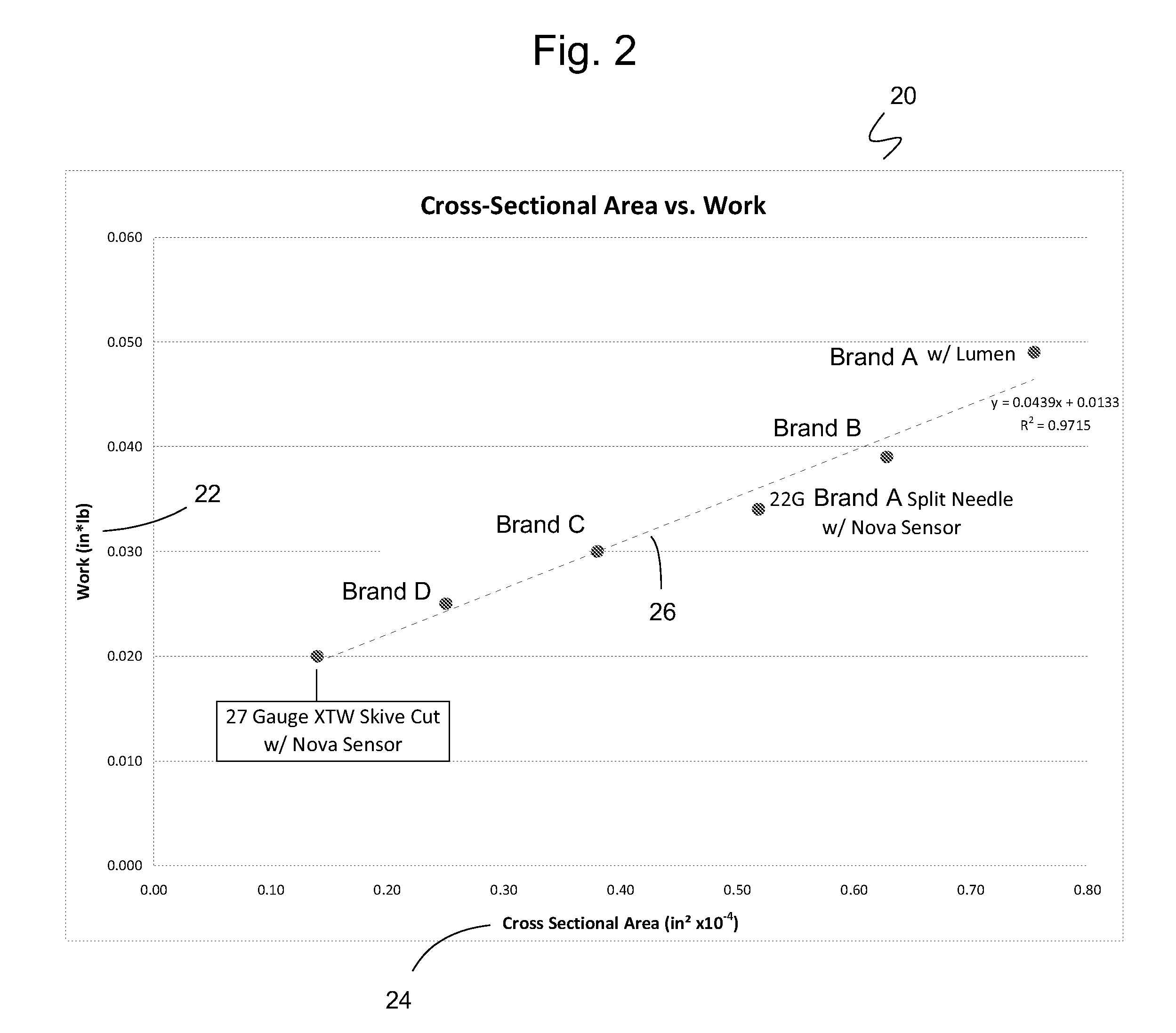Subcutaneous sensor inserter and method
a sensor and subcutaneous technology, applied in the field of glucose monitoring sensors, can solve the problems of slow adoption of glucose monitoring devices by many patients, cgm user forums comparing and critiquing current available devices for their pain of deployment, and likely to trigger a pain response, so as to minimize pain, minimize the peak force of insertion, and minimize the effect of pain
- Summary
- Abstract
- Description
- Claims
- Application Information
AI Technical Summary
Benefits of technology
Problems solved by technology
Method used
Image
Examples
Embodiment Construction
[0124]Exemplary embodiments of the present invention are illustrated in FIGS. 4-54. FIGS. 4 and 5 illustrate perspective views of one embodiment of a sharp 100 of the present invention. Sharp 100 includes a sharp body 102, a sharp open region 104, and a sharp tip 106. Sharp body 102 is an annular section of sharp 100 that extends longitudinally and defines an enclosed conduit 101 therethrough. In one embodiment, sharp 100 is made from 27 gauge XTW stainless tubing having an outside diameter of about 0.016 inch (0.41 mm) nominal and an inside diameter of about 0.012 inch (0.30 mm) nominal. The tubing is then flattened to have an oval or elliptical shape with an outside height 108 along the minor axis of the oval or elliptical shape of about 0.0120 inch (0.30 mm).
[0125]A wire EDM machining operation is used to remove a portion of the tubing wall 103 along sharp 100 a predefined distance to define sharp open region 104, thereby reducing the overall height 110 of sharp 100 along the min...
PUM
 Login to View More
Login to View More Abstract
Description
Claims
Application Information
 Login to View More
Login to View More - R&D
- Intellectual Property
- Life Sciences
- Materials
- Tech Scout
- Unparalleled Data Quality
- Higher Quality Content
- 60% Fewer Hallucinations
Browse by: Latest US Patents, China's latest patents, Technical Efficacy Thesaurus, Application Domain, Technology Topic, Popular Technical Reports.
© 2025 PatSnap. All rights reserved.Legal|Privacy policy|Modern Slavery Act Transparency Statement|Sitemap|About US| Contact US: help@patsnap.com



